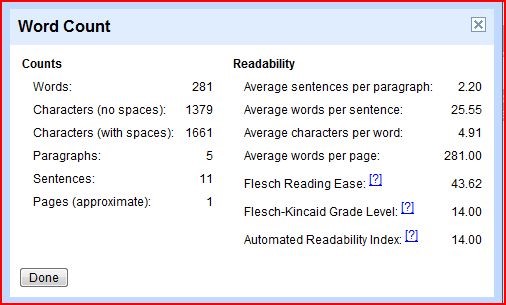If you want to ensure a high search engine ranking, then you have to take time to check and make sure that your website, and all of your webpages, are properly optimized and are performing efficiently. One of the best ways to ensure that proper optimization techniques are being utilized in your website is by practicing the best and most fundamental search engine optimization (SEO) processes available.
Whether you are engaging in on-page or off-page optimization, you have to make sure that you employ the latest and most effective methods available based on the basic elements of SEO. But, with the different varieties of techniques and methods being implemented by a number of so-called experts, the industry has become convoluted with varying practices. It’s tough to figure out which ones are ethical and most effective, and which techniques are best suited to your specific SEO needs.
This article provides the most basic elements in writing and developing content for your webpages to make sure that your website will improve its ranking in search engines.
Develop Good Quality Content by Observing These 6 Basic Elements
[column_break]
1. Write content that has at least 2,000 words.
When it comes to content, the more words there are, the better are your chances of getting ranked. According to various studies conducted on the subject, the first 10 search results displayed by the search engine giant, Google, had a content average of no less than 2,000 words. This is no coincidence. By bolstering the number of words in your content, you essentially improve your chances of getting a better search engine rank for your target keywords, although quality and relevance are still important. You should never sacrifice quality over quantity when it comes to writing content.

Reaching your desired word count is good. But, you need to focus more on quality than quantity.
Forcing yourself to write 2,000-word articles all the time can cause you to overload your content with fluffy words and unnecessary sentences just so you can reach your targeted word count. This is not a good practice. The essence of any content, which are the thoughts and the ideas given by the writer, are the most significant aspect of any piece of writing, whether it’s an article or a blog.
2. Heading tags are your friend, use them effectively.
Instead of just writing content in a single, unabridged collection of words and sentences, try to present it in a more organized and comprehensible manner. And the best way to do so is by using heading tags. You can divide your content into different sections using the heading tags to make the article more palatable to your readers. Let’s face it, not everyone wants to read through a long 2,000-word article just to get to the information they really want. With heading tags, you can group your content in various elements surrounding the main subject of your article. This way, your readers can simply skim through the article and skip directly to the part of the content they are most interested in.
Besides the fact that heading tags make long articles more readable, search engines also use them to determine the relevance of the content to the keywords and terms being searched. In effect, this will also improve your website’s chances in getting ranked.
3. Optimize your content by using target keywords and phrases.
Choosing the right keyword phrases is the cornerstone of every successful SEO campaign. The basic step in developing content that centers on a specific industry is comprehensive keyword research. By using a variety of keyword research tools, you can determine which terms and phrases individuals often use in search engines when searching for a particular product or service. You can obtain a collection of search terms that are specific to your business and build your content using the most frequently used of those keyword phrases.
By using target keywords, you can develop a more focused and consumer-oriented content that will appeal to your target market. And the more you know what they are looking for, the more you can effectively develop content that will satisfy their query.
4. Images are content, too; so don’t hesitate to use them.
Images are content, too. Webpage content is much more than just articles or blogs. Over the years, visual content has gained popularity among web designers and SEO practitioners because they help deliver information in a more efficient manner. It doesn’t hurt that good quality images add life and sophistication to a webpage as well.
By using any of the varying types of image editors available, you create customized images to use on your webpages. And by utilizing social image sharing websites like Pinterest, Instagram, and even Facebook, images can also provide better accessibility to your pages as your content gets found much faster by members of these social networking sites.
Although the process involved in creating visual content is not particularly for SEO purposes, it does have an indirect, yet significant, effect to your site’s search rankings. Many online marketing specialists believe that there is a direct correlation between high search rankings and high social shares, especially when social media comes into play. Adding visual content can help bridge the gap between the two aspects. By creating images that are persuasive and interesting enough for your target audience, you compel them to share the material to their own followers, potentially increasing your page ranking in search results.
5. Ensure quality and uniqueness of your content.
Quality and uniqueness are two of the most important ingredients in any web content. Producing great content on your own is not only time-consuming and overwhelming, but it’s inefficient as well. The best approach is to delegate the content development aspect to more qualified professionals. By outsourcing the development of your web content, you will have access to some of the best talents in the industry. These individuals have more experience in writing unique and great quality content.
There are various services online that can help provide a wide range of content for your website, from editorial-type content to academic and technical writing. And to make sure that you are indeed getting unique content, you may opt to run the article in a plagiarism check tool, which is available online as well. Such tools can help keep your website free from plagiarized content, which, needless to say, entails penalties from Google.
6. Improve your calls to action through engaging and compelling content.
Regardless of your online goals, whether it’s to increase your social media followers, redirect traffic to a specific page in your website, or encouraging your readers to comment on your blog posts, creating an engaging call to action can help you reach your goals much faster.
When running a website, you should strive for improving your content by using the best calls to action that compels your visitors to engage with you and with each other. This will help boost your site’s conversion rate, thus improving traffic and search ranking. Through great quality and engaging content, you will have a better chance of converting visitors into leads and potential clients.
And through these 6 key elements in content development, you now have an idea of what it takes to create great quality content for your website that has the potential to boost your ranking in the search engine results page (SERP).




